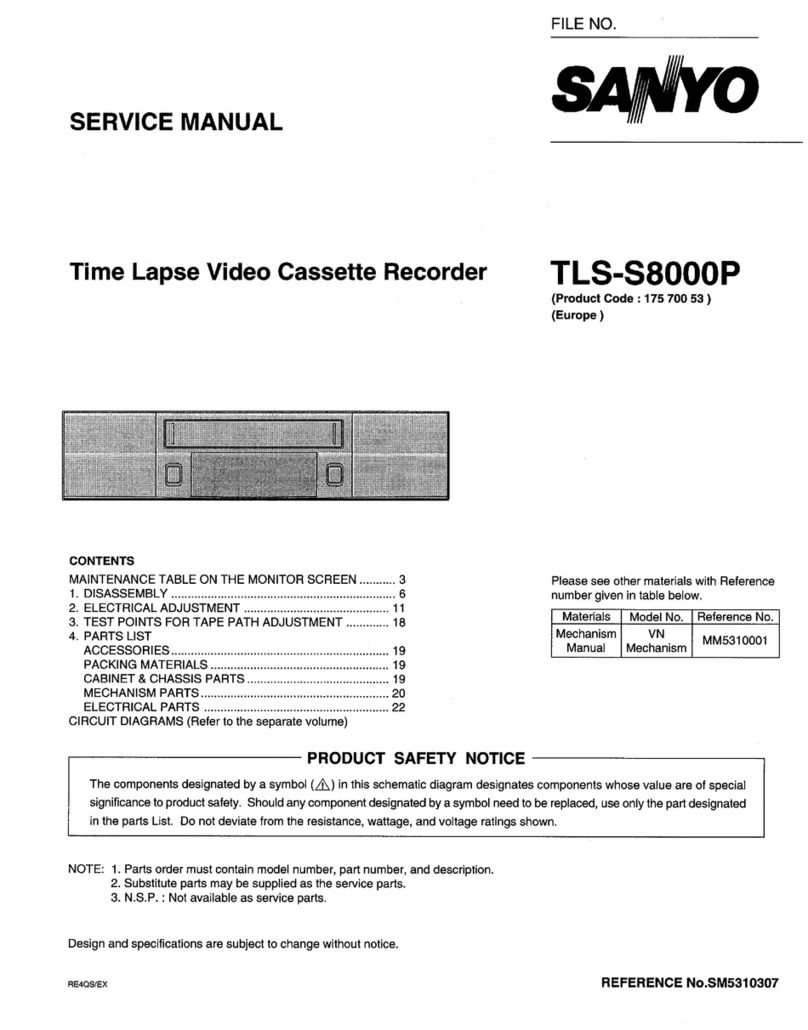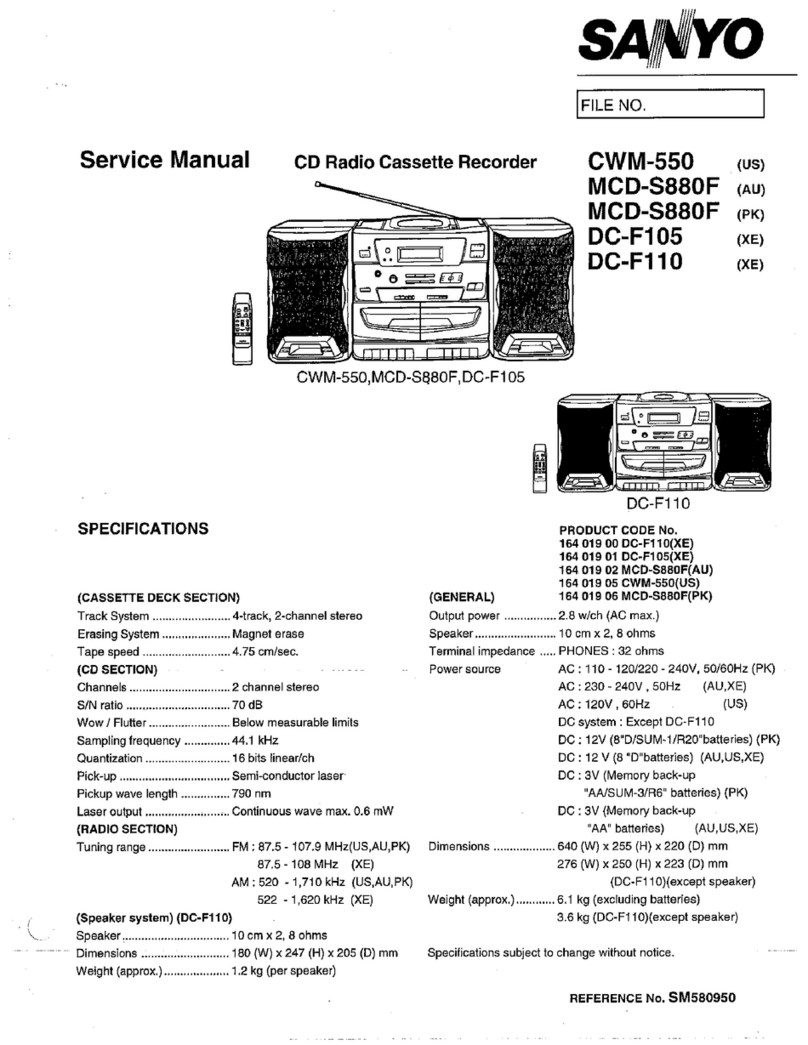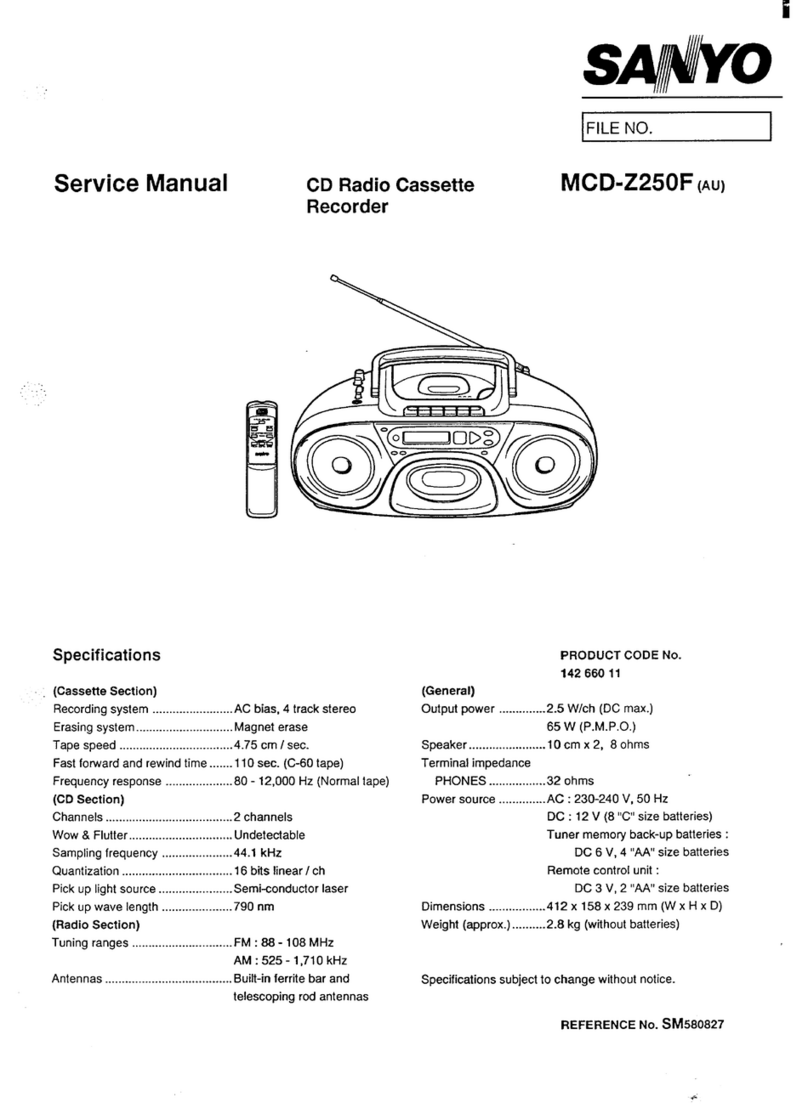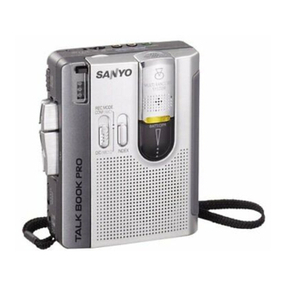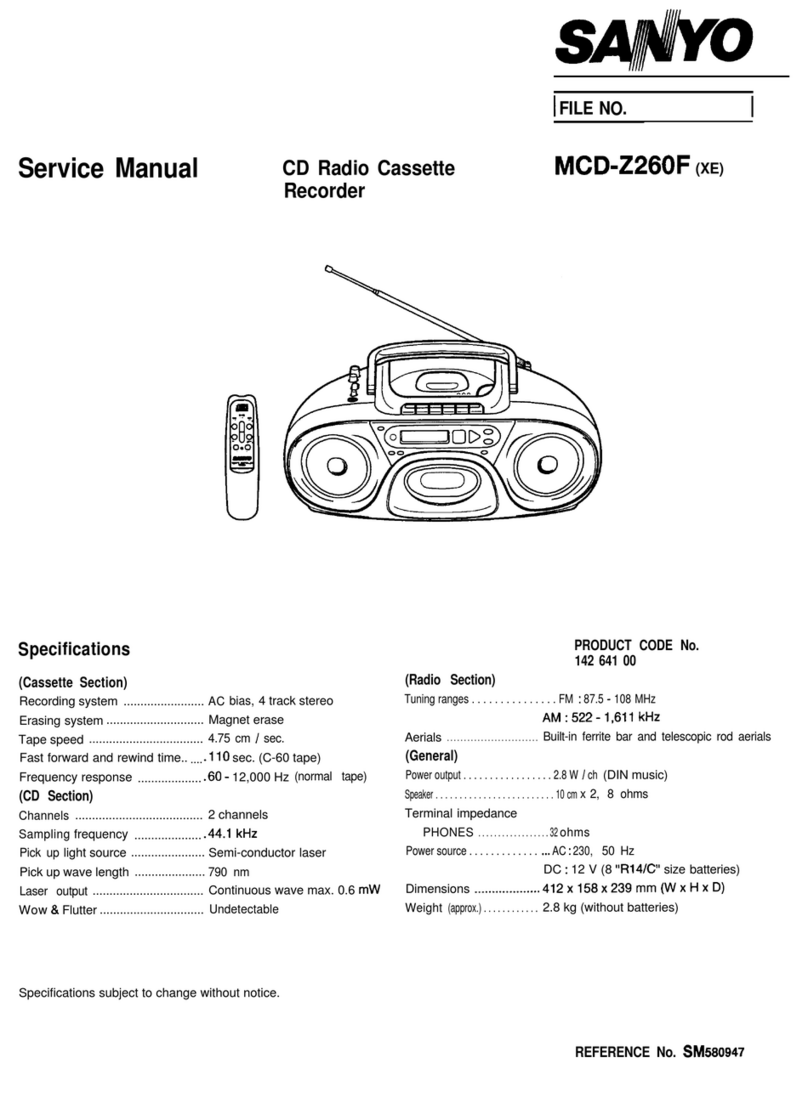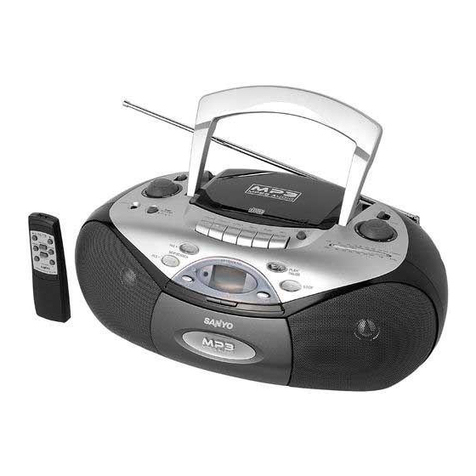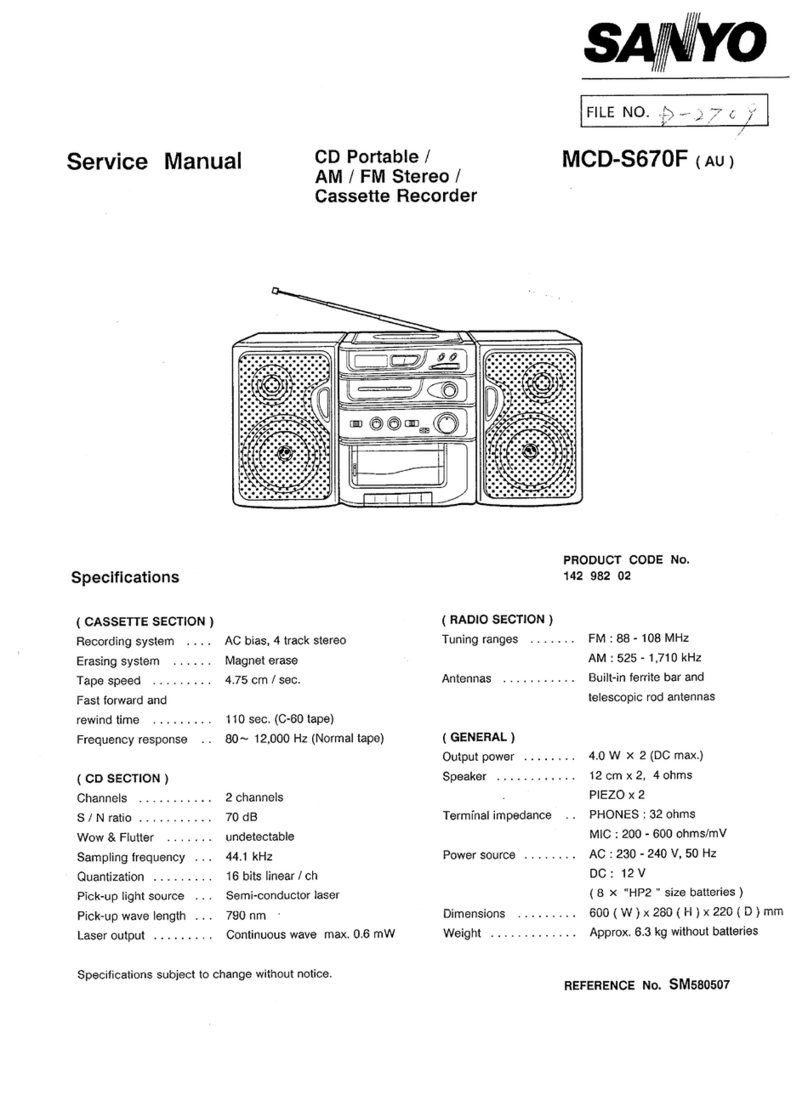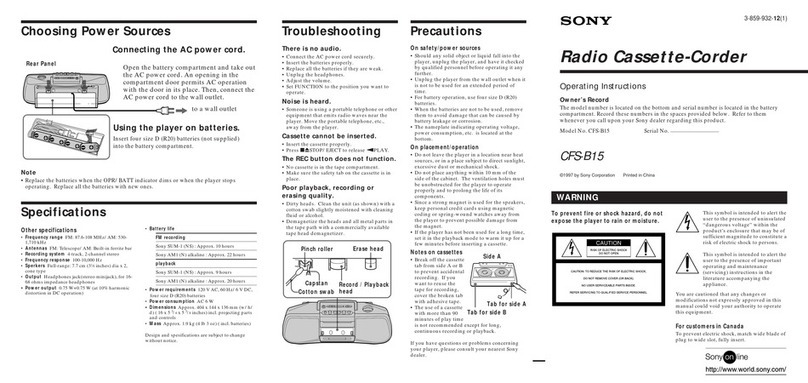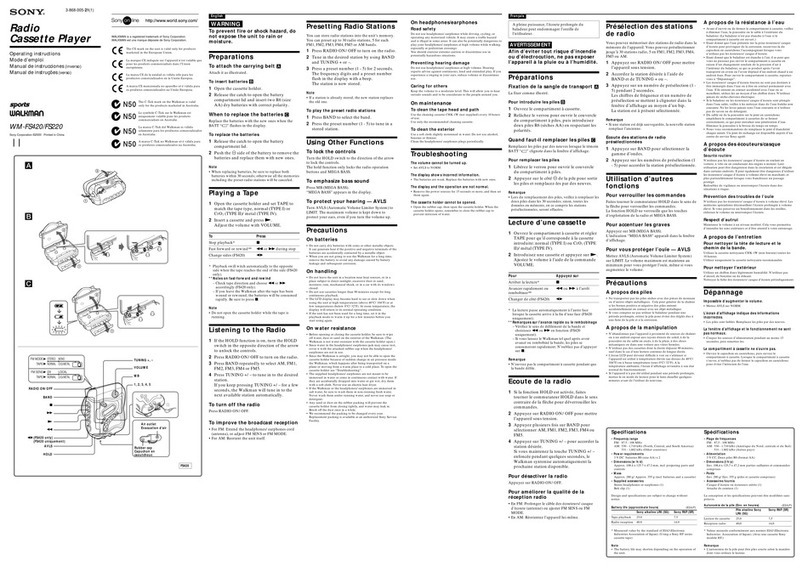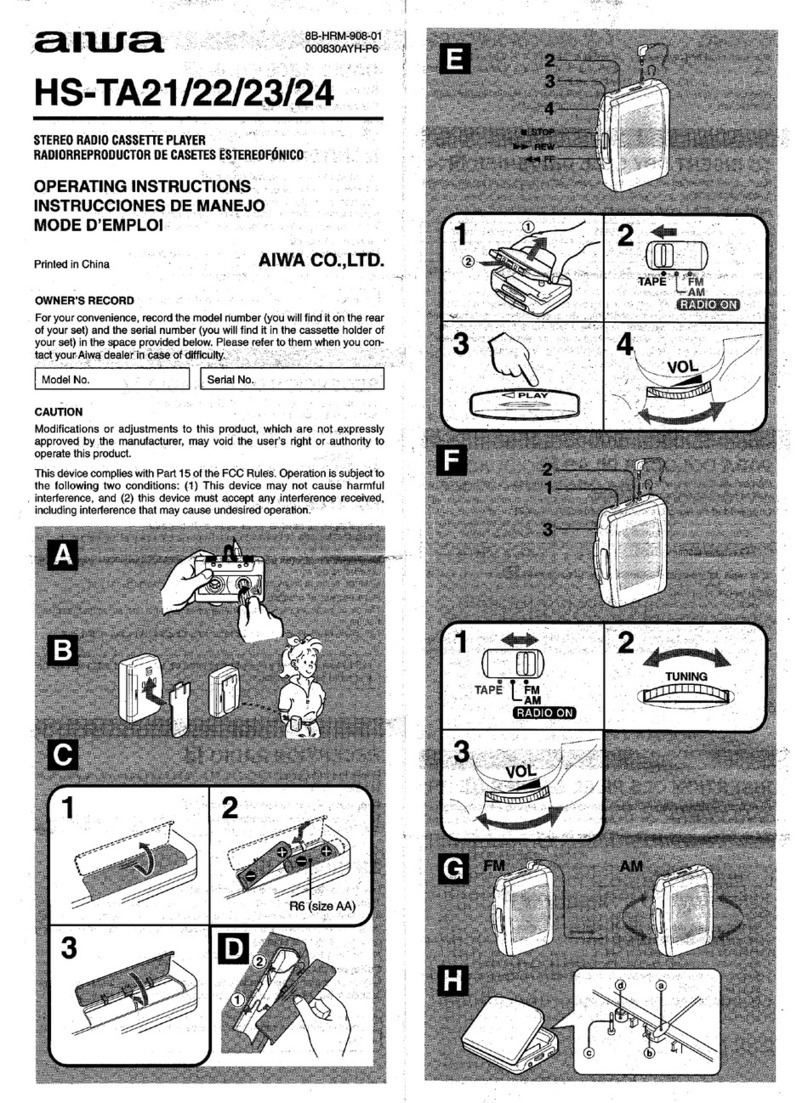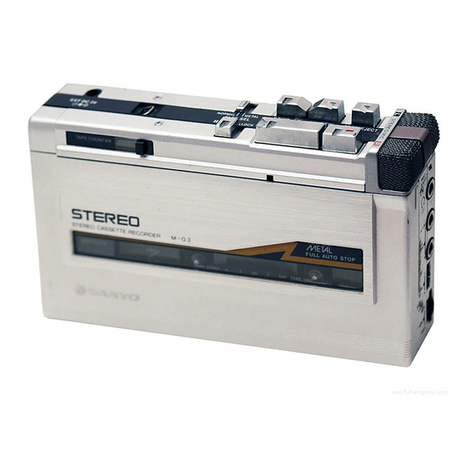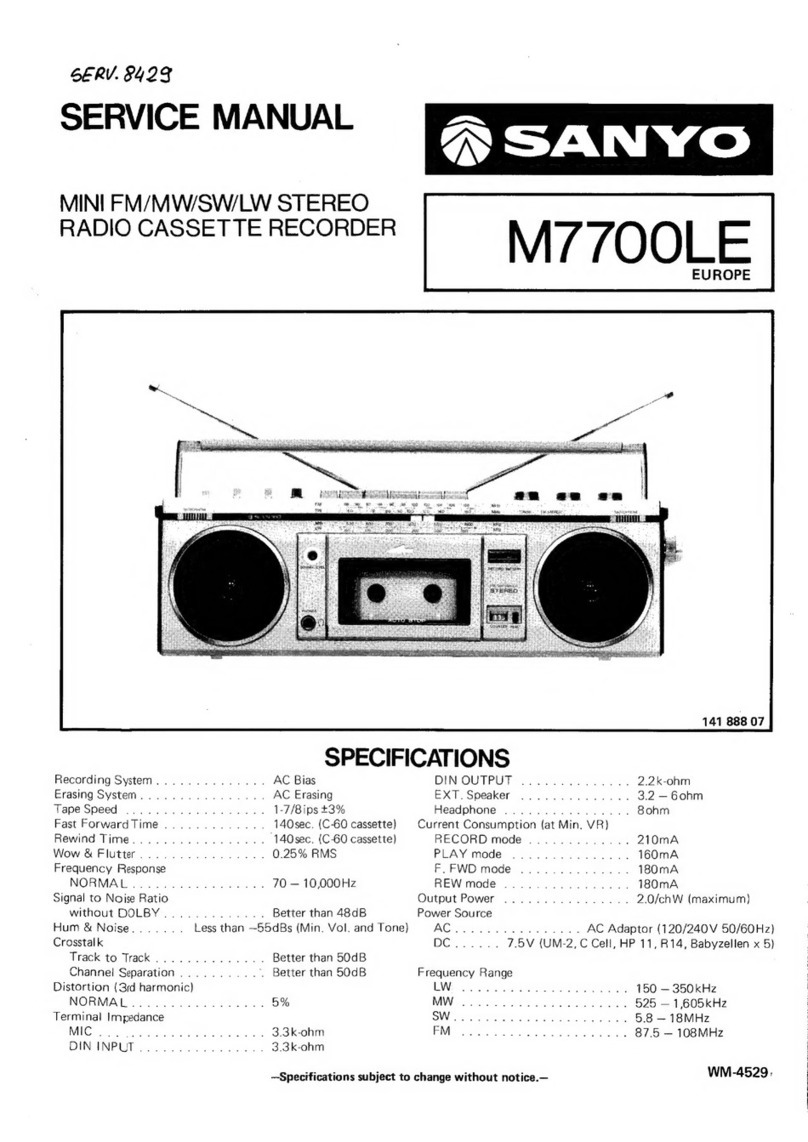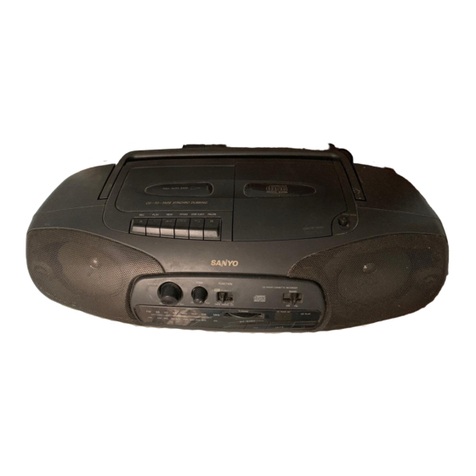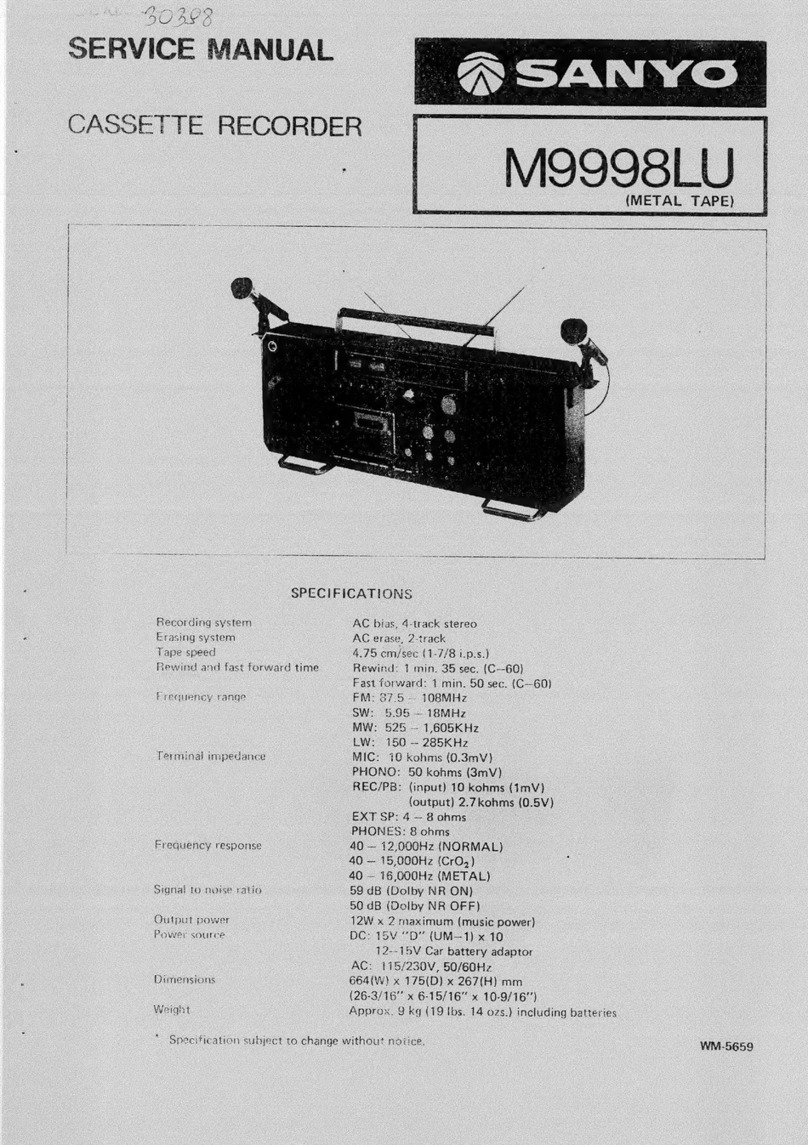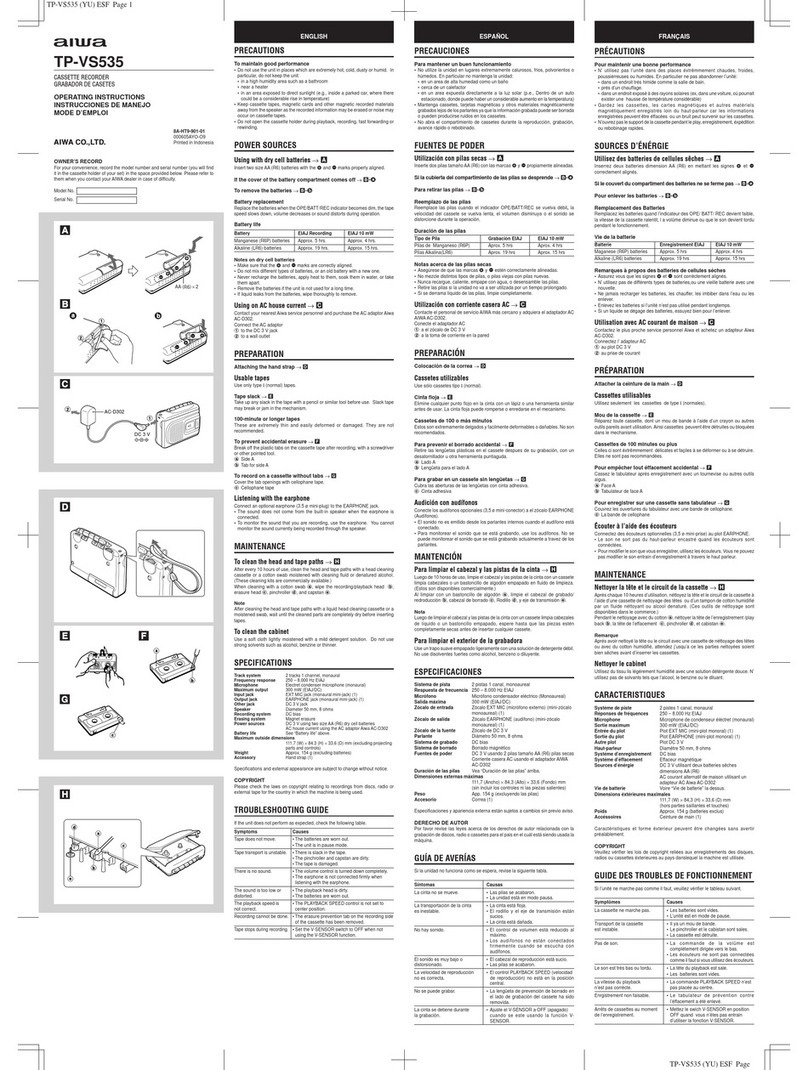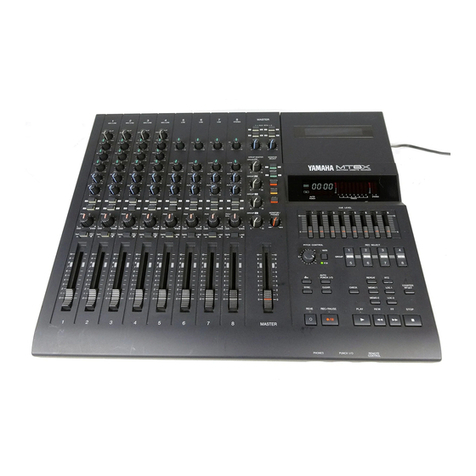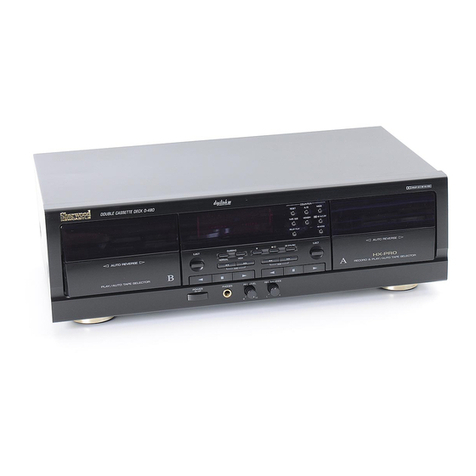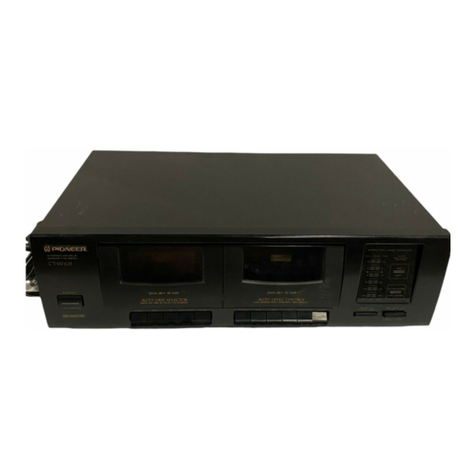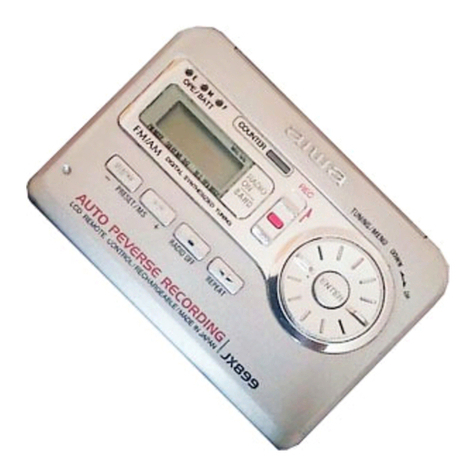3103J11(N)
2. ELECTRICAL ADJUSTMENT
-
L
“L
2-1. PREPARATION
2-1-1. EQUIPMENT
●
●
●
●
●
●
●
●
●
●
●
●
●
●
●
Colour TV monitor
PAL Colour-bar generator (with RF and LINE OUTPUT)
Audio signal generator
Oscilloscope (dual trace; frequency response: 10MHZ or
more; probe: 10:1 )
Frequency counter (countable to 10MHZ or higher)
Digital voltmeter
AC voltmeter
In/output probes
Alignment cassette (VHJ-0008) PAL Colour bar 1KHz
Alignment cassette (VHJ-0009) Monoscope 6KHz
Alignment cassette (VHJ-0051 )Check for D.O.C.
Alignment cassette (VHJ-0023) PAL Monoscope 6KHz,
PAL Colour-bar 1KHz, SECAM Colour-bar 1KHz, PAL RF
Sweep MESECAM Colour-bar 1KHz, NTSC Colour-bar
1KHz.
Relay jig (VHJ-0066) 7-wire cable for Pre-amp unit
Relay jig (VHJ-0084) for CP-1 and CP-2 board
Relay jig (VHJ-0085) for Video pre-amp unit
2-1-2. CONNECTING THE RELAY JIG
When repairing CP-1 and CP-2 board
(seeFigs.2-1-2 and 2-1 -3)
NOTE: The connection of any Relay jigs can be done
without removing the front panel of the main unit.
1. Remove the seven screws of the CP- 1board to take out
with CP-2 board connected.
2. Insert the CP-1 board with CP-2 board connected in the
slit of chassis as shown in Fig. 2-1-3 (right).
3. Connect CNOI and CN02 of Relay jig (VHJ-0084) into
connectors of the PW-I board and the Pre-amp unit, in the
direction of arrow as shown in Fig. 2-1-3 (left). Fix the
relay jig with screw if necessary.
4. Connect 12-pin, 8-pin and 4-pin connectors of the Relay
jig to connectors CN541, CNI 01 and CN201 on the CP-I
board, respectively.
5. Connect connector (1) from ACE head to CN06 of the
Relay jig (VHJ-0084).
6. After finishing the repairs and adjustments, put the Flat
cables back to its former position.
When repairingthe Pre-amp unit
(seeFigs.2-1-1 and 2-1 -4)
1. Remove the Pre-amp unit from the chassis, connect
Relay jig (VHJ-0066) between the Pre-amp unit and
drum assembly.
2. Connect Relay jig (VHJ-0084) excepting 8-pin connector
between the PW- 1board and CP- 1board as shown in
Fig. 2-1-4. Fix the relay jig with screw if necessary.
3. Connect Relay jig (VHJ-0085) between the top of Pre-
amp unit and CNIOI on the CP-I board.
NOTE: When repairing or adjusting the Pre-amp unit,
temporary fasten or securely touch one end of the
shield case to the metal chassis.
Kwco9
CN02 connectorto
CN181 of Pre-ampunit
8-pin connectorto
CN101 ofCP-1 board
Relay jig VHJ-0085
Fig. 2-1-1
l“w-!-
CN06 connectorfrom
connector(1) Ak:::y;:yzrd
8-pin mnnectorto
‘CN101 ofCP-1 board
c.-
CN511 of PW-1 board \S 4-oin ccmnectorto
Relay jig VHJ-0084 wCN201 of CP-1board
Fig. 2-1-2
—2—

